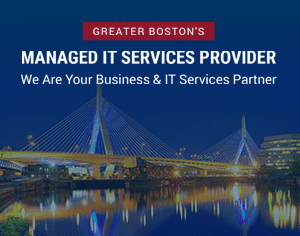Blog
IT Budget Planning Made Simple
Planning your company’s IT budget can often be a daunting task. After you’ve allocated funds for computers, printers, scanners, internet connectivity, a server, hosting service for your website and email, and [hopefully!] some sort of antivirus you may think you’ve got it covered. But what about the unexpected costs? A computer that crashes and needs to be entirely replaced? A virus that gets by your software and destroys all of your data? A power outage that fries your server? Or a flood that destroys everything?
Those issues are ones that can cost a company thousands of dollars. In some case, such as a data breach or loss of data, it could cost the company its entire existence. According to FEMA, 40% of businesses do not reopen after experiencing a natural disaster (flood, fire, etc.), and according to the United States Small Business Administration if a business does reopen after a disaster, 90% of them will fail within two years.
Those are some pretty scary statistics, but there are ways to ensure your company is budgeting your IT spending in the best way possible so that you can avoid being a part of those statistics.
Whether you think you’ll ever need it or not, investing money in a solid Disaster Recovery and Business Continuity plan could save your company in the future. Additionally, Managed Services (such as the ones TSI offers!) may seem like an unnecessary expense in the short term (after all, you just spent all that money on brand new equipment, what could possible go wrong?) but regularly scheduled maintenance and proactive monitoring can help prevent data loss and downtime in the future, as well as extend the lifecycle of your equipment. Would you rather begin replacing every computer within three years, or get as much life as possible out of them by keeping them “healthy?”
When planning your IT budget, keep the following questions in consideration:
-How many of your employees work remotely some or all of the time? — This could have a major impact on your technology budget, as you will need to be able to provide them with IT support remotely, as well as provide them with secure and swift access to the data and services/software that they need.
What are your primary goals and objectives?
-Is your company looking to replace or refurbish equipment?
-Does your company already have a solid Disaster Recovery and Business Continuity plan in place? — If not, you should consider investing in the necessary resources and equipment!
-Consider routine maintenance and upkeep priorities.
-Would you rather spend money on an emergency/as-needed basis, or at regular intervals to avoid emergencies? (See what we did there – that one is a no brainer!)
Regardless of the amount of routine maintenance and proactive support you have in place, you will eventually need to replace or upgrade some of your technology, and that should be factored in on a yearly basis.At TSI, we assist our clients with planning their IT budget, managing it efficiently, and providing the support and maintenance that their systems need to make sure that our clients are getting the most bang for their IT buck. Our Managed Services plans allow our clients to rest easy, knowing that their technology is being routinely monitored and maintained to keep it in good working order, while our Disaster Recovery plans provide the peace of mind that should a disaster occur, all is not lost.
For more information on how TSI can help your company, give us a call at (508) 543-6979.
Categories
- Backup & Disaster Recovery
- Business Operations
- Case Studies
- Cloud Services
- Cyber Security
- Employee Spotlight
- Finance & Budgeting
- Glossary Term
- Governance & IT Compliance
- Managed Services
- Mobile Device Management
- Network Infrastructure
- NIST 800-171 & CMMC 2.0
- PCI
- Podcast
- Project Management
- TSI
- Uncategorized
- vCIO
Cyber Security Policy Starter Kit:
10 Critical Policies That Every Company Should Have in Place


